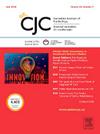有氧运动训练项目后心血管适应性的性别差异:系统回顾和荟萃分析。
IF 5.8
2区 医学
Q1 CARDIAC & CARDIOVASCULAR SYSTEMS
引用次数: 0
摘要
背景:有氧运动训练对健康男性和女性心血管适应性的影响尚不清楚。本系统综述和荟萃分析总结了健康成人有氧运动训练干预后心脏适应性的性别差异。方法:检索自成立至2024年6月的5个电子数据库。心脏适应数据包括:V * O2peak、HR、a-vO2diff、收缩压、舒张压、每搏量、心输出量、左室质量、LVEDV、LVESV和LVEF。在RevMan 5.4中进行meta分析。结果:对左室质量、LVEDV、LVESV和LVEF四项指标进行meta分析。荟萃分析显示,有氧运动干预后左室质量(SMD=-0.01, 95% CI: -0.29, 0.27, P=0.97)、LVESV (MD=1.85,95% CI: -3.45, 7.10, P=0.5)或LVEF (MD=-0.9, 95% CI: -3.26, 1.46, P=0.45)无性别差异。meta分析显示LVEDV存在性别差异;有氧运动训练后,男性的LVEDV改善程度明显高于女性(MD=7.67, 95% CI: 2.75, 12.59, P=0.002)。在其他结果中没有观察到其他性别差异。总体偏倚风险较低,证据质量中等。结论:与女性相比,有氧运动干预与男性LVEDV的增加有关;但在心脏形态学(左室质量)和功能指数(LVEF)方面没有发现性别差异。本文章由计算机程序翻译,如有差异,请以英文原文为准。
Sex Differences in Cardiovascular Adaptations Following Aerobic Exercise Training Programs: A Systematic Review and Meta-analysis
Background
The influence of aerobic exercise training on cardiovascular adaptations in healthy males vs. females is unclear. This systematic review and meta-analysis summarized sex-based differences in cardiac adaptations following aerobic exercise training interventions in healthy adults.
Methods
Five electronic databases were searched from inception to June 2024. Cardiac adaptation data included peak oxygen uptake, heart rate, arteriovenous oxygen difference, systolic and diastolic blood pressure, stroke volume, cardiac output, left ventricular (LV) mass, LV end diastolic volume (LVEDV), LV end systolic volume (LVESV), and LV ejection fraction (LVEF). Meta-analyses were conducted in RevMan 5.4.
Results
Meta-analyses were conducted on 4 outcomes: LV mass, LVEDV, LVESV, and LVEF. The meta-analysis revealed no sex differences in LV mass (standardized mean difference = –0.01, 95% confidence interval [CI]: –0.29, 0.27, P = 0.97), LVESV (mean difference [MD] = 1.85, 95% CI: –3.45, 7.10, P = 0.5), or LVEF (MD = –0.9, 95% CI: –3.26, 1.46, P = 0.45) following aerobic exercise interventions. Meta-analyses revealed a sex difference in LVEDV: males show a greater improvement in LVEDV (MD = 7.67, 95% CI: 2.75, 12.59, P = 0.002) than females after aerobic exercise training. No other sex differences were observed in any of the other outcomes. The overall risk of bias was low, and the quality of evidence was moderate.
Conclusions
Aerobic exercise interventions were associated with a larger increase in LVEDV in men relative to women, yet no sex differences were found in cardiac morphology (LV mass) or functional indices (LVEF).
求助全文
通过发布文献求助,成功后即可免费获取论文全文。
去求助
来源期刊

Canadian Journal of Cardiology
医学-心血管系统
CiteScore
9.20
自引率
8.10%
发文量
546
审稿时长
32 days
期刊介绍:
The Canadian Journal of Cardiology (CJC) is the official journal of the Canadian Cardiovascular Society (CCS). The CJC is a vehicle for the international dissemination of new knowledge in cardiology and cardiovascular science, particularly serving as the major venue for Canadian cardiovascular medicine.
 求助内容:
求助内容: 应助结果提醒方式:
应助结果提醒方式:


